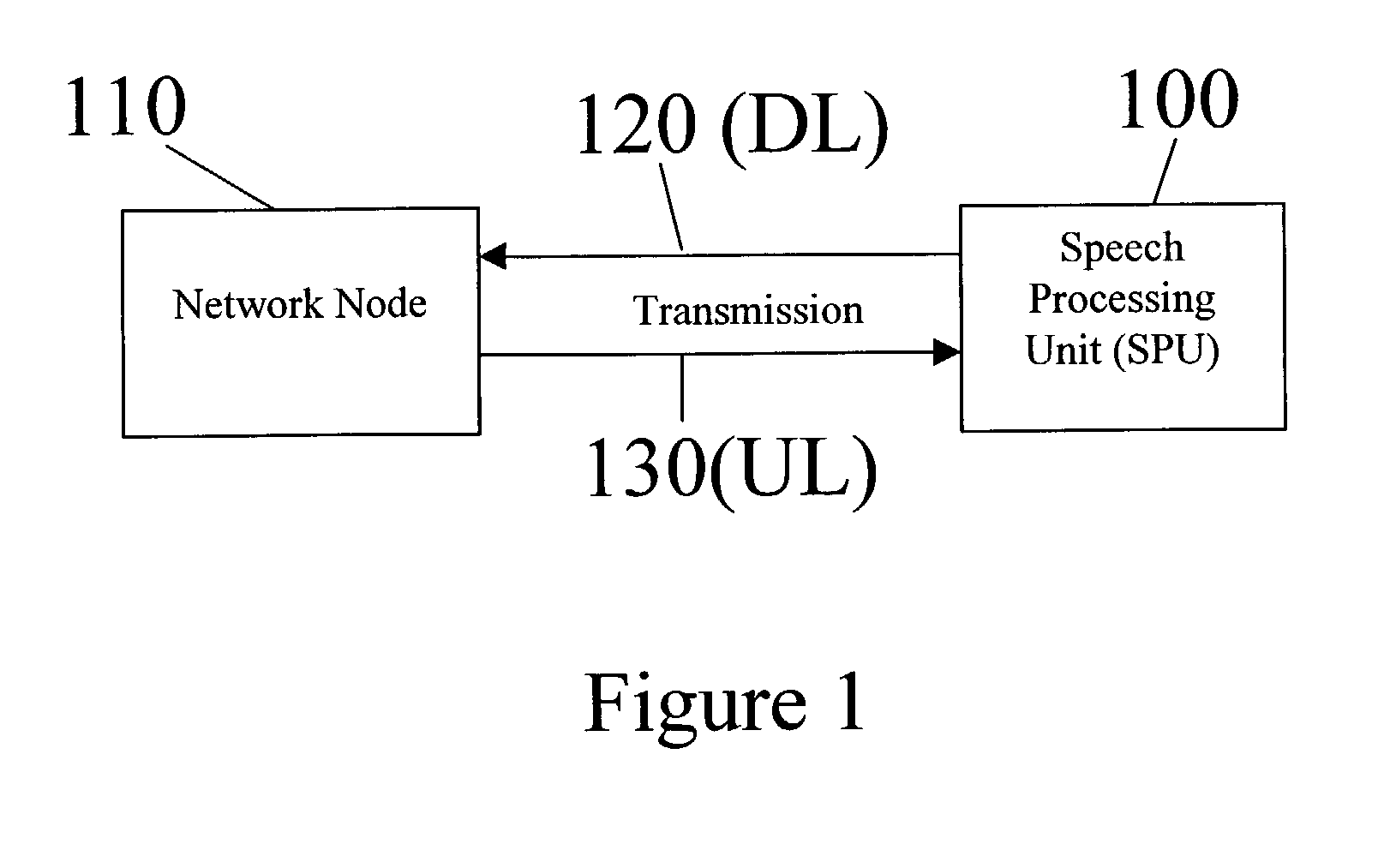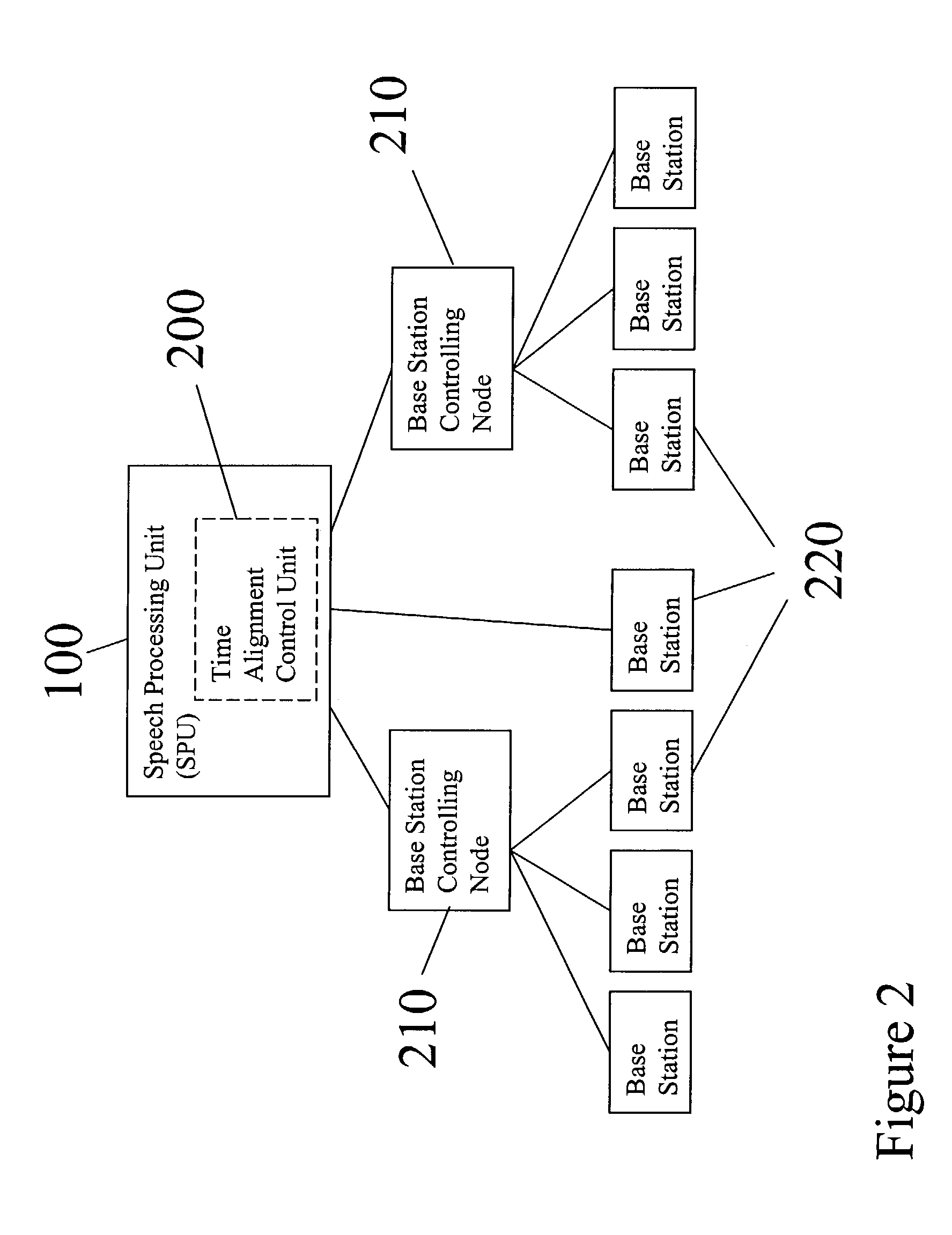Method and device for reducing scheduling delay in a digital communication system
a scheduling delay and digital communication technology, applied in the field of methods and devices for reducing scheduling delays in digital communication systems, can solve the problems of data processing (more specifically, the encoding and decoding tasks of speech processing units) in general suffering severe scheduling delays, and the scheduling delay between a speech processing unit and a radio network node is efficiently reduced, and the scheduling delay is reduced.
- Summary
- Abstract
- Description
- Claims
- Application Information
AI Technical Summary
Benefits of technology
Problems solved by technology
Method used
Image
Examples
Embodiment Construction
[0020]In the following description, for purposes of explanation and not limitation, specific details are set forth, such as particular embodiments, circuits, signal formats etc. in order to provide a thorough understanding of the present invention. It will be apparent to one skilled in the art that the present invention may be practiced in other embodiments that depart from these specific details. In particular, while the different embodiments described herein below are incorporated in a Wideband Code Division Multiple Access (WCDMA) communication system, the present invention is not limited to such an implementation, but may be also used in other communication systems such as, for example the General Packet Radio Service (GPRS) or Enhanced Data rates for GSM Evolution (EDGE) systems. Moreover, those skilled in the art will appreciate that the functions explained herein below may be implemented using individual hardware circuitry, using software functioning in conjunction with a pro...
PUM
 Login to View More
Login to View More Abstract
Description
Claims
Application Information
 Login to View More
Login to View More - R&D
- Intellectual Property
- Life Sciences
- Materials
- Tech Scout
- Unparalleled Data Quality
- Higher Quality Content
- 60% Fewer Hallucinations
Browse by: Latest US Patents, China's latest patents, Technical Efficacy Thesaurus, Application Domain, Technology Topic, Popular Technical Reports.
© 2025 PatSnap. All rights reserved.Legal|Privacy policy|Modern Slavery Act Transparency Statement|Sitemap|About US| Contact US: help@patsnap.com



